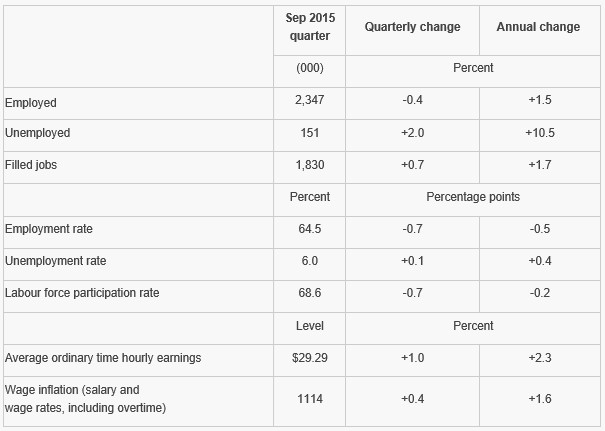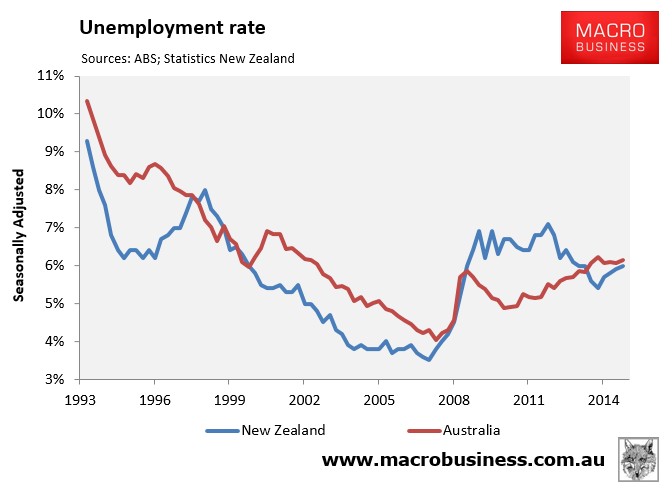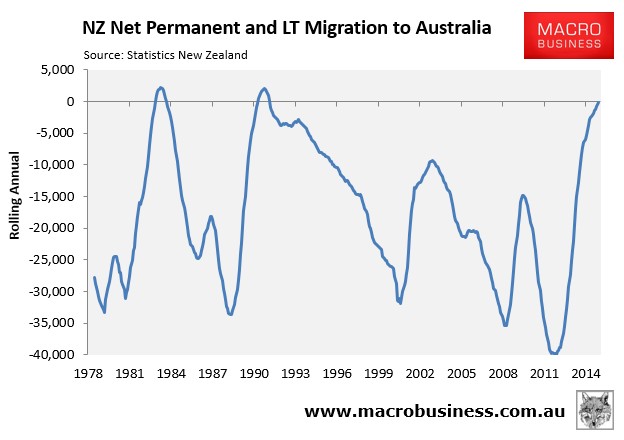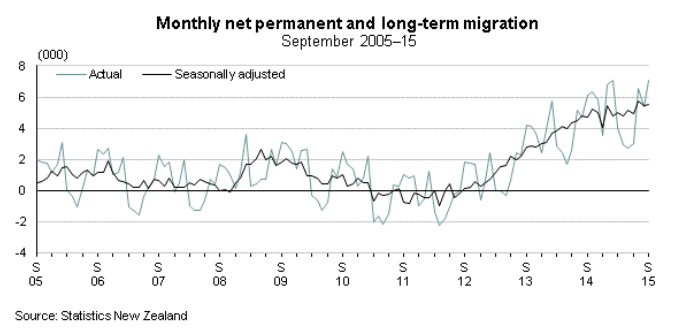Statistics New Zealand has this morning released its labour force data for the September quarter, with employment and wages growth weakening more than expected. The key changes are outlined in the below table:

As shown above, employment fell 0.4% or 11,000 in the September quarter, whereas the unemployment rate climbed to 6.0%. The result would have been much worse were it not for the 0.7% decline in the labour force participation rate, which offset the employment loss.
According to Bernard Hickey at Interest.co.nz, it was the first fall in employment in three years and weaker than market expectations for growth of around 0.4% and the Reserve Bank’s forecast for growth of 0.5%. It was also the largest increase in the number of people not in the workforce since the March 2009 quarter.
Wages growth was also weaker than forecast, coming in at just 0.4% in the September quarter and 1.6% over the year.
The rise in New Zealand unemployment to 6.0% brings it almost in line with Australia’s (see next chart).

And with labour market conditions not too dissimilar, one wonders whether the exodus of Kiwis back to New Zealand – which is running at the fastest pace in 24 years – will continue (see next chart).

With New Zealand immigration running at record highs (see next chart), and jobs growth clearly failing to match population growth, there are also concerns that New Zealand’s unemployment rate could push up towards 7% next year.

Still, the deteriorating labour market amid record immigration hasn’t stopped the population ponziteers, with Infometrics’ Andrew Whiteford today arguing for New Zealand to further boost so-called skillied migration. From Interest.co.nz:
New Zealand employers are going to increasingly struggle to find trained individuals for their job openings…Importing new skills into New Zealand will need to be a big part of the strategy to combat skill gaps and this opens up an opportunity. International education is recognised as an important contributor to the New Zealand economy. It is the fifth biggest export earner and has plenty of potential to build on recent growth, especially now with the weaker Kiwi dollar. If we can identify the types of skills that will be needed in the future and can attract individuals from overseas to study towards obtaining those skills we will kill many birds with one stone. We will grow an important industry and create a pipeline of skills which are needed for the future. And of course we will benefit from new ideas and approaches which immigrants bring with them, as well as linkages to important markets around the world.
Isn’t the definition of insanity doing the same thing over and over and expecting different results?

